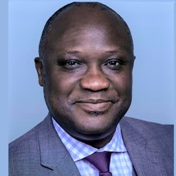iPS Cells (iPSCs) for Modelling and Treatment of Human Diseases 2022
A special issue of Cells (ISSN 2073-4409). This special issue belongs to the section "Stem Cells".
Deadline for manuscript submissions: closed (15 June 2023) | Viewed by 40744
Special Issue Editors
Interests: iPSC-based disease modelling; Alzheimer's disease; Nijmegen breakage syndrome; steatosis patients; acute and chronic kidney injury
Special Issues, Collections and Topics in MDPI journals
Interests: pluripotent stem cells; in vitro differentiation; hepatocytes; non alcoholic fatty liver disease; epigenetics
Special Issues, Collections and Topics in MDPI journals
Special Issue Information
Dear Colleagues,
Since the generation of human-induced pluripotent stem cells (iPSCs) in 2007, numerous protocols have been developed to differentiate iPSCs into cells of all three germ layers. iPSC-derived cellular products have already been applied in regenerative medicine-based therapies.
In addition to therapy, in vitro differentiated cells are currently used for drug testing, development, and disease modeling to give valuable insights into underlying mechanisms. iPSC-derived 3D organoids are composed of distinct cell types characteristic within the organ under investigation and adopt specific organ-related structure, thus further increasing their maturity and utility compared to 2D cultured cells. Furthermore, culturing of organoids employing organ-on-a-chip systems has added an additional level of sophistication and enhancement, thus enabling investigations at near-physiological levels.
In this Special Issue, we call for original research, review articles, and meta-analyses related to iPSC-based 2D and 3D disease modeling, encompassing organs derived from all three germ layers. In addition, we are interested in studies demonstrating the therapeutic usefulness and safety of iPSC-derived cells.
Prof. Dr. James Adjaye
Dr. Nina Graffmann
Guest Editors
Manuscript Submission Information
Manuscripts should be submitted online at www.mdpi.com by registering and logging in to this website. Once you are registered, click here to go to the submission form. Manuscripts can be submitted until the deadline. All submissions that pass pre-check are peer-reviewed. Accepted papers will be published continuously in the journal (as soon as accepted) and will be listed together on the special issue website. Research articles, review articles as well as short communications are invited. For planned papers, a title and short abstract (about 100 words) can be sent to the Editorial Office for announcement on this website.
Submitted manuscripts should not have been published previously, nor be under consideration for publication elsewhere (except conference proceedings papers). All manuscripts are thoroughly refereed through a single-blind peer-review process. A guide for authors and other relevant information for submission of manuscripts is available on the Instructions for Authors page. Cells is an international peer-reviewed open access semimonthly journal published by MDPI.
Please visit the Instructions for Authors page before submitting a manuscript. The Article Processing Charge (APC) for publication in this open access journal is 2700 CHF (Swiss Francs). Submitted papers should be well formatted and use good English. Authors may use MDPI's English editing service prior to publication or during author revisions.
Keywords
- Induced pluripotent stem cells (iPSCs)
- genome editing
- disease modeling
- organoids
- organ-on-a-chip
- cellular therapeutics
- bioinformatics
Related Special Issue
- iPS Cells (iPSCs) for Modelling and Treatment of Human Diseases in Cells (10 articles)







